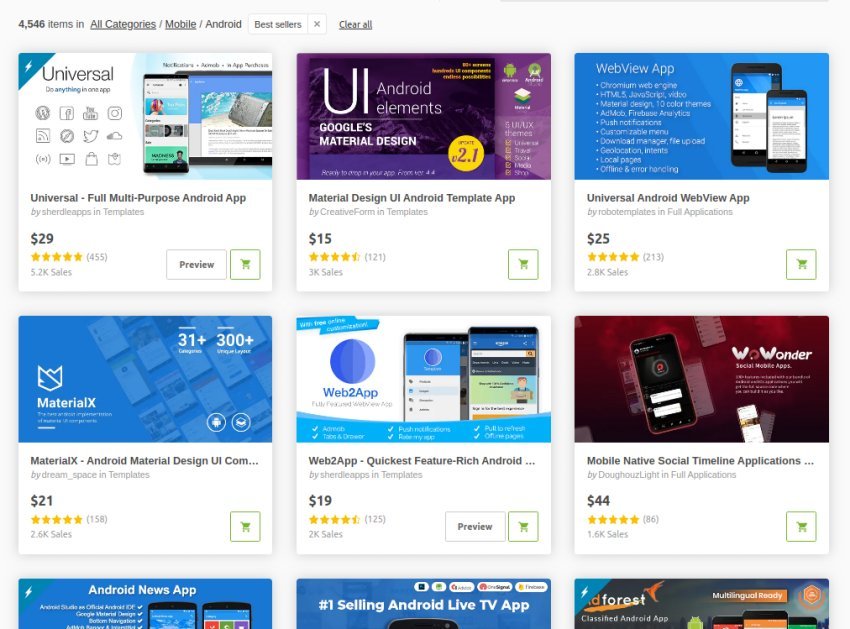Alternative approaches to Android application development—those that involve writing no code at all or writing only minimal amounts of code—are becoming increasingly feasible today. They are, of course, ideal for non-programmers, but experienced programmers too can use them to save time and effort. In this tutorial, I’m going to talk about two such approaches and introduce you to several tools and templates that enable them.
CodeCanyon Is a Marketplace for App Templates and Builders
CodeCanyon is an online marketplace that has hundreds of additional professional Android app templates and builder tools. Some of these are incredibly feature-rich and well-designed. You can sometimes save days, even months, of effort by using one of them.



Using App Builders
App builders are usually tools that allow you to create apps by simply filling in a few forms. Most of the popular ones are flexible enough to create a large variety of apps. For instance, you could use them to create e-commerce apps, news apps, or even chat apps. And the best thing about them is that you won’t have to write a single line of code while using them.
1. Android App Builder
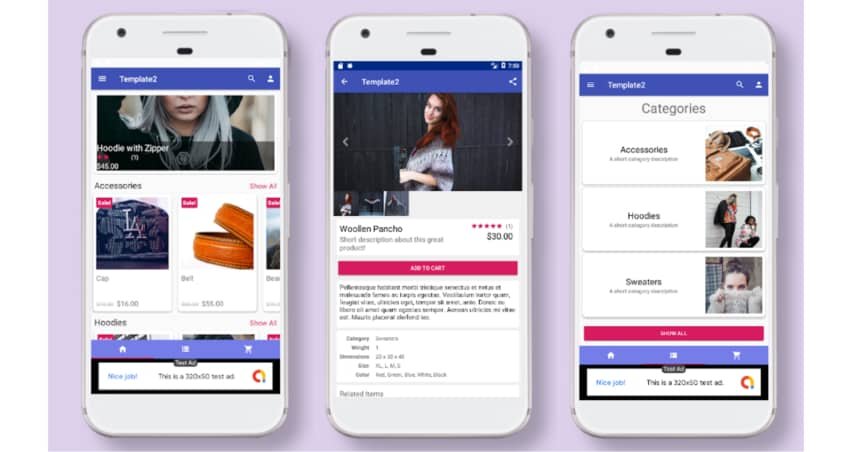
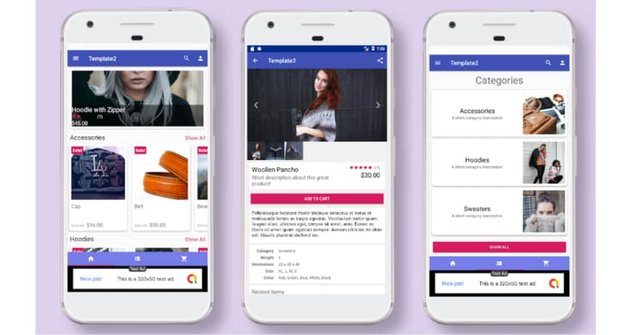
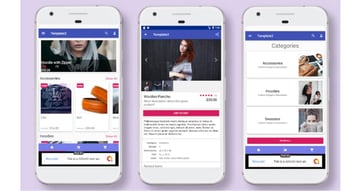
Native apps are becoming popular: they offer a superior user experience and also allow you to send push notification messages to your users even when the user is not using the application. Android App Builder is a multipurpose app builder that will allow you to create native Android apps, integrate with your WooCommerce store, and show WordPress posts on your Android app.
Android app builder also comes with eye-catching layout options, and you can create an unlimited number of apps.

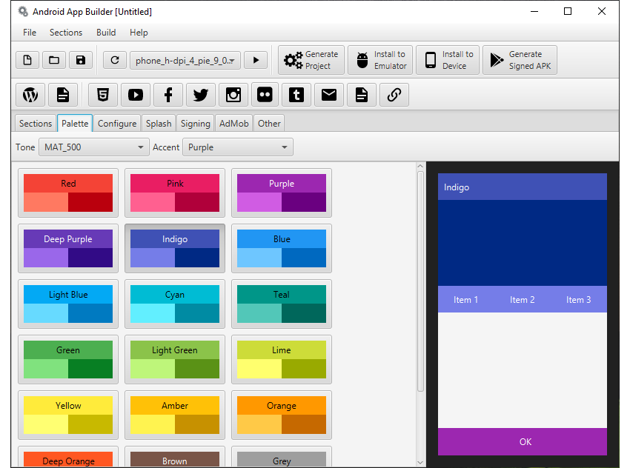
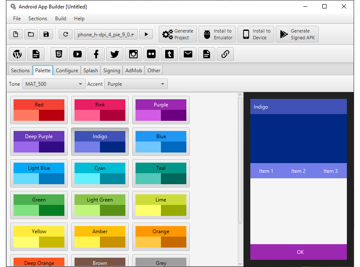
Android App Builder also has several features dedicated to handling all the YouTube videos, Flickr albums, and Tumblr posts you embed in your websites. It comes with six unique layouts for displaying the contents of YouTube channels and playlists. Similarly, to display the contents of your Flickr albums and Tumblr picture posts, it offers three layouts.
2. IMABuildeRz 3
IMABuildeRz is another popular app builder that can build apps for both Android and iOS devices. It uses the Ionic 6 framework internally, so it generates TypeScript and SCSS code.

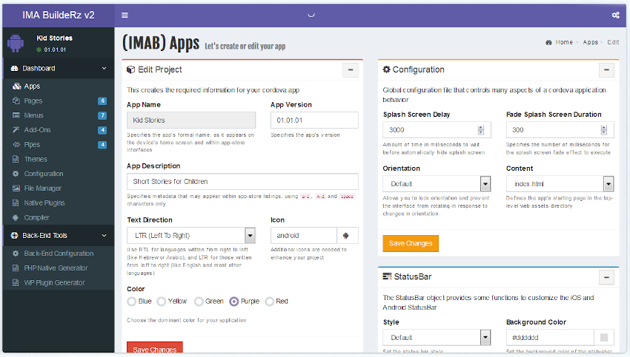
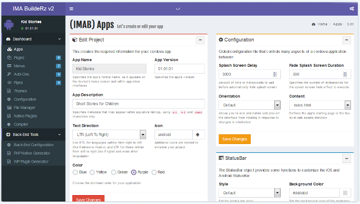
This tool comes with 35 free addons you can use to quickly add common features to your apps. For example, there are addons to handle forms, JSON documents, JWT authentication, and AdMob ads. There are also addons that can instantly generate full-fledged screens, such as “About Us” and “Contact Us” screens.
Furthermore, there are directives available to implement functionality such as text to speech, barcode scanning, and media streaming.
3. AppsGeyser: A Free Android App Builder
If you’re looking for a tool that’s free, AppsGeyser is definitely worth a try. It’s an online app development platform that offers over 70 unique app templates and a simple, forms-based interface to customize them. There are templates for quiz apps, coloring apps, browsers, messengers, and several different types of games too.

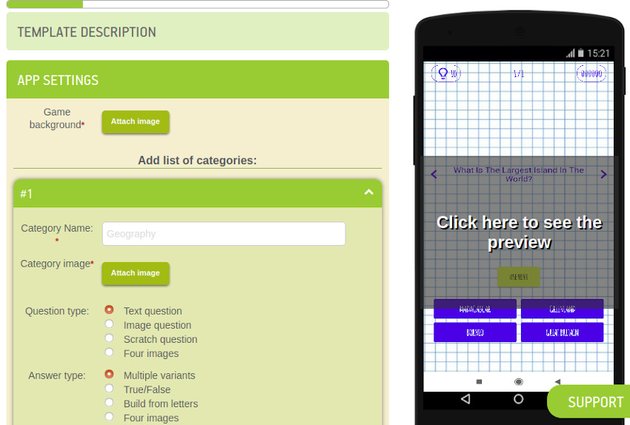
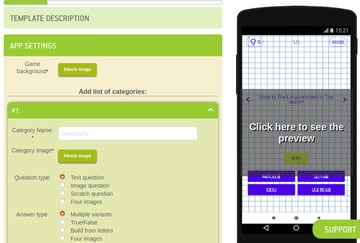
Note that the free version of AppsGeyser works on a revenue share system. In other words, it expects you to have ads in your apps and share 50% of your revenue. If you’re not okay with that, you’ll have to switch to the premium version, which allows you to turn the ads off.
Converting Websites to Apps
If you already have a blog or a progressive web app, there are tools available on CodeCanyon that can turn it into a native Android app. Most of them use either webviews or the WordPress API to do so.
WebViewGold for Android
WebViewGold for Android is a very popular template for converting websites into high-performance, native Android apps. The apps you build with it will have support for in-app purchases, push notifications, deep links, AdMob ads, and many different kinds of native dialogs. Right out of the box, you also get easily customizable splash screens, loading indicators, and offline screens.

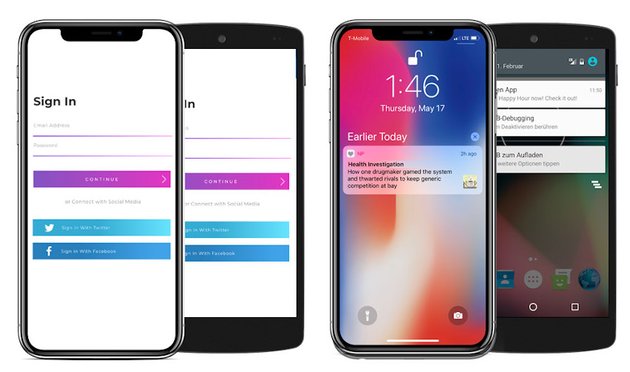
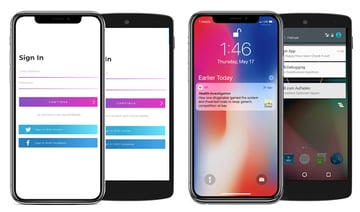
If you’re in a hurry and want to create your app within the next couple of minutes, WebViewGold is for you. All you need to do is point the template to your website or a local folder containing all your HTML files and build it with the latest version of Android Studio.
WebViewGold is available for iOS too. So if you want your app to run natively on both Android and iOS, and to have a similar look and feel on both platforms, using these templates is the way to go.
Universal Android WebView
The Universal Android WebView template has been a bestseller on CodeCanyon for years now. This Android template can convert any website into a native Material Design app that looks good and performs well on both phones and tablets. Because color is an extremely important aspect of Material Design, it offers ten beautiful color themes for your apps.

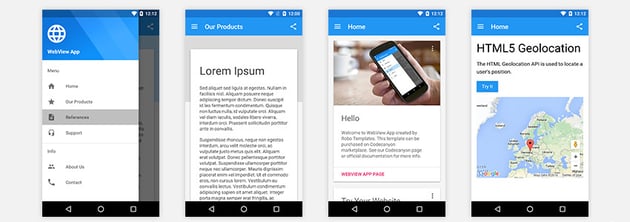
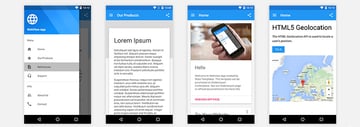
The apps you build with this template will have a navigation drawer and support for the pull-to-refresh gesture. They’ll also be fully integrated with AdMob ads, Firebase Analytics, and Firebase Cloud Messaging. Additionally, to be able to handle file downloads, they’ll have a download manager built into them.
To customize the Universal Android WebView template, you only need to make changes in a single configuration file, which is very easy to understand. As such, if you have a responsive website, you should be able to convert it into a well-polished app in about 15 minutes using this template.
Flink App Builder
Flink App Builder is a powerful tool that helps you convert a WordPress site into a native Android app in just a few clicks. Because it is fully integrated with the WordPress platform, the apps you build with it will be capable of smoothly rendering all your blog’s posts, pages, comments, and image galleries. Furthermore, any changes you make on your blog will be instantly reflected in your app.
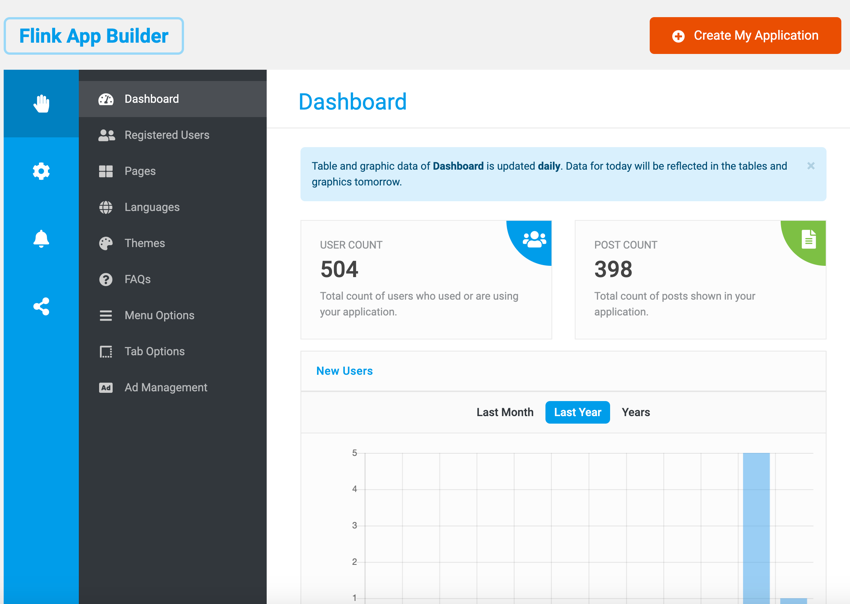
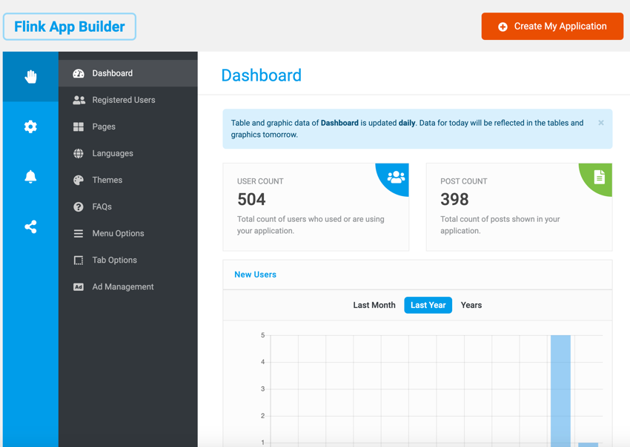
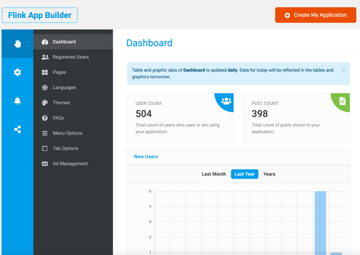
All the apps you create with Flink will have in-built support for push notifications. And if you want to monetize those apps, you can choose to add AdMob ads or Facebook Audience Network ads to them.
Flink apps have many additional features to improve the user experience they offer, such as screen transition animations, splash screens, and Material Design components. But one of the best things about them, in my opinion, is that they have user management built into them. This means that they not only support user sign-ups and sign-ins, but are also capable of having password-protected content.
RocketWeb
RocketWeb is another premium template that uses a webview to turn a web app into a native Android app. It offers over 50+ multiple screen themes you can use to style your app. Some themes have solid colors, while others have attractive gradients.
The template is highly customizable, but there’s no coding required. You can use a simple, browser-based form to configure the template so it matches your requirements.
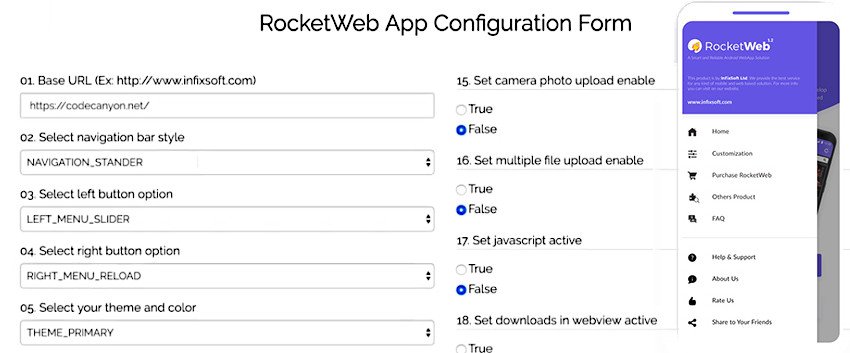
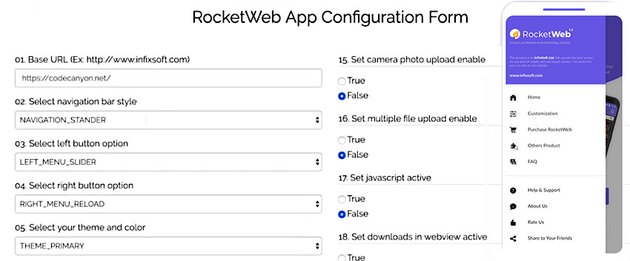
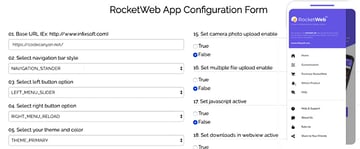
The apps you create with RocketWeb will have, in addition to the webview, a navigation drawer, a toolbar, and a beautiful splash screen, all of which can be tweaked to match your site’s look and feel. They’ll also have error pages included, which you can use to handle connectivity issues and other such runtime errors.
RocketWeb apps support both Google Cloud Messaging and OneSignal push notifications. And if you wish to monetize them, all you need to do is enable AdMob ads.
How to Create a Book Reader App with Appsgeyser.
In this section, you will learn how to create your own book reader app with Appsgeyser without writing a single line of code. This process will take only a few minutes.
Create an account and sign in. Once you sign in, you will see this dashboard, at the top right corner click Create App. On the next screen, select the Book Reader option, and click Next.
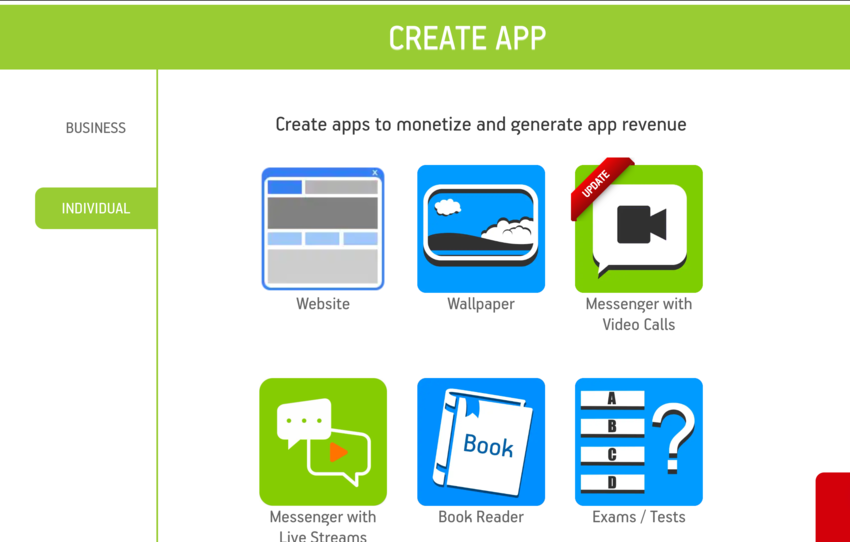
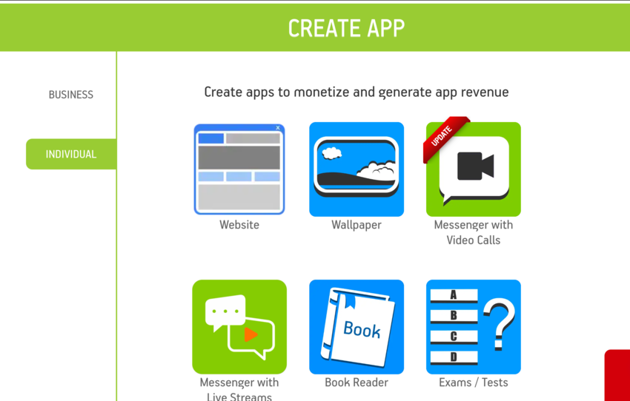
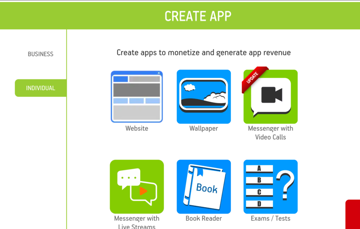
Now upload some ebooks to make a book library.

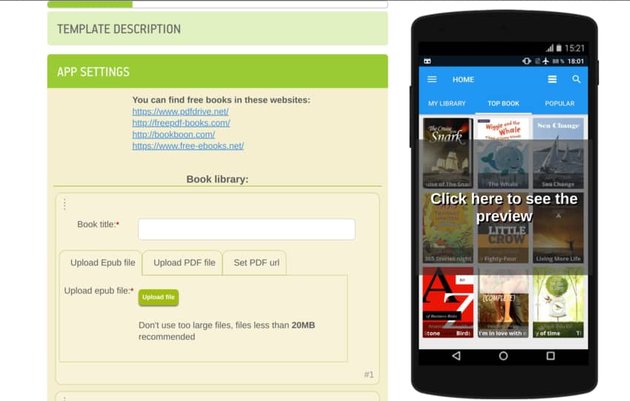
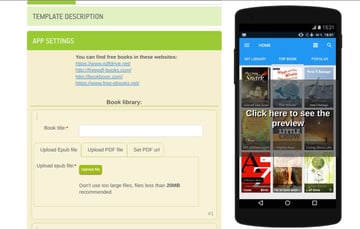
Here you can add as many books as you can. Enter the title and upload the corresponding .epub or PDF file.
Then choose or create your color scheme and click Next.

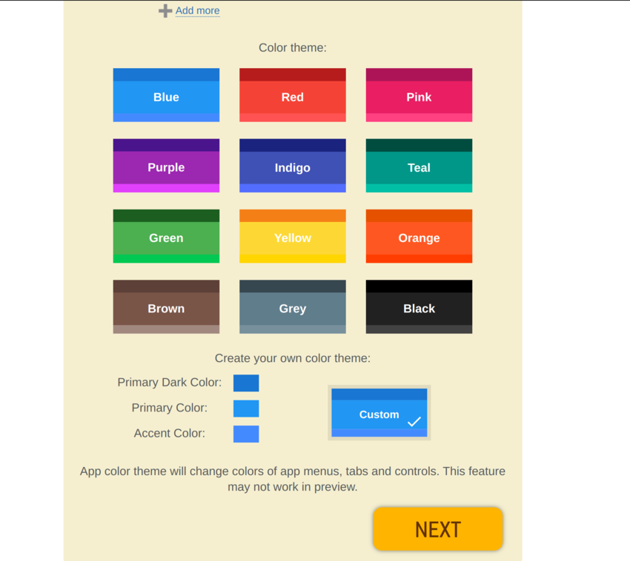
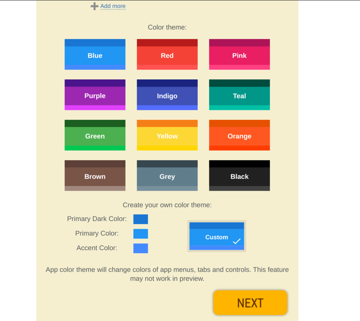
Give your app a name. Then add or choose a custom icon and finally click the Create button.

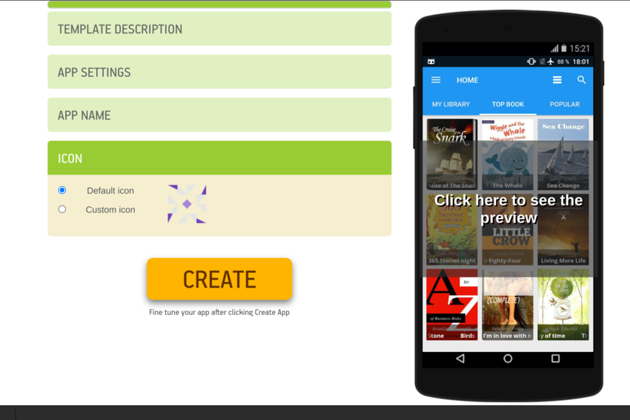
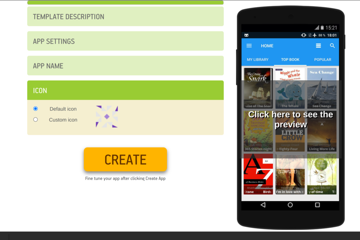
You can now download the APK and test it on your phone, Appsgeyser also provides a link where users can download it.
The app now looks like this:

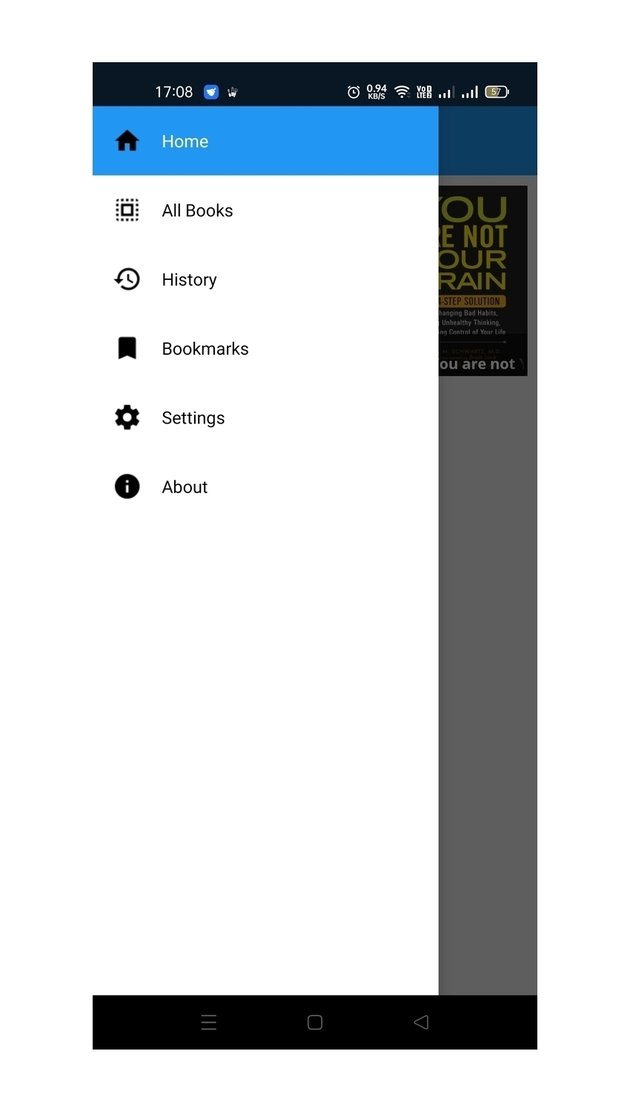
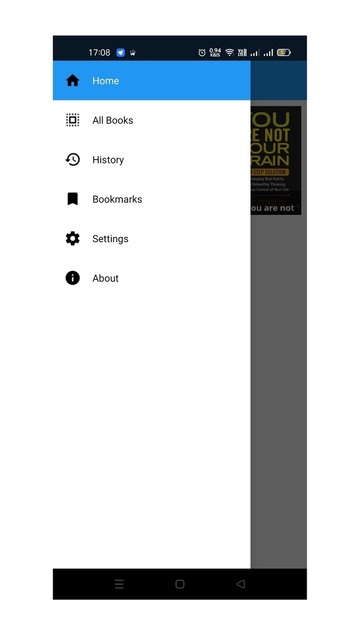
Conclusion
You can be a non-programmer and still build profitable Android apps. In this article, I introduced you to several tools and templates you can use to do so. Most of the tools I mentioned are so easy to use and speed up the process of app development so much that you can potentially churn out multiple apps every day. By adding ads to those apps and publishing them on Google Play, you can easily build a new passive income stream for yourself.
If you’re only interested in quickly building an attractive app for your business, I suggest you also take a look at some of the full Android application templates available on CodeCanyon. You can learn more about app templates in our other posts.
This post has been updated with contributions from Esther Vaati. Esther is a software developer and writer for Envato Tuts+.
